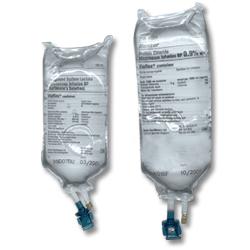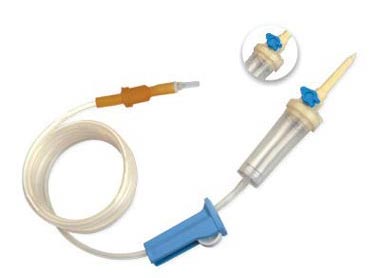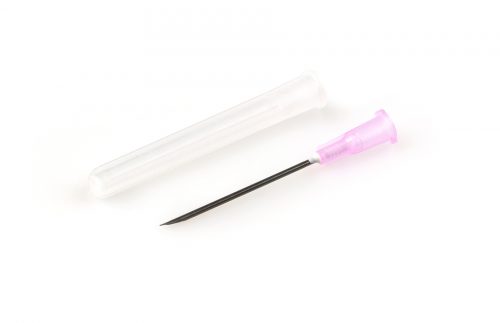What does subcutaneous fluid administering mean:
Subcutaneous fluid administration for dogs is the act of injecting a solution of sterile fluids directly underneath the canine’s skin. The medical term for underneath the skin is subcutaneous, with “sub” meaning underneath and “-cutaneous” referring to the skin. Subcutaneous fluid administration may be required for a number of circumstances in which the dog has inadequate body level fluids.
Ask your vet to show you how this is done. It’s not as scary as it looks and it can save your dogs life!
https://www.youtube.com/watch?time_continue=7&v=J0m6JTlqjAQ
Subcutaneous Fluid Therapy – You Want Me To Poke What?
December 15, 2014 by CriticalCareDVM https://criticalcaredvm.com/subcutaneous-fluid-therapy-want-poke/
At some point in a pet’s life, s/he will benefit from receiving fluid under the skin or subcutaneous fluid. This type of therapeutic intervention is prescribed to help treat mild dehydration or to prevent dehydration in at-risk patients. For some parents, the thought of administering subcutaneous fluid can be downright scary, so I’m writing this post in an effort to reduce anxiety about this common treatment. What equipment is needed to administer subcutaneous fluid? The needed equipment is relatively simple, non-cumbersome, and includes:
A bag of special fluid:

A fluid administration set:

A needle:

The fluid administration set is a tube that connects the fluid bag to the needle:

How is the subcutaneous fluid administered?
– Your veterinarian and/or one of her/his nurses will provide adequate instruction about administration. General steps include:
– Choose the location where you will treat your pet. This may be a table, counter top, or in your lap.
– Hang the fluid bag about 3 feet above the level of your pet’s head.
– Place your pet in the selected treatment location. Be sure both you and your fur baby are in a position that will be comfortable for 10-15 minutes. The end of the fluid administration set should easily reach your pet.
– Pick up a roll of loose skin over the shoulder blades.

– Lay the point of the needle at the base of the roll of skin with the needle horizontal and pointing to the pet’s head (assuming your pet is in an upright or standing position).

– Advance the needle slightly forward while pulling the roll of skin backward. This should place the point of the need under the skin.
– Release the roll of skin. The point of the needle should remain under the skin.
– Grasp the fluid administration set lock in one hand and begin the flow of fluids by rolling the roller upward.
It is not necessary to “sterilize” the skin with alcohol prior to inserting the needle. In reality, wiping a little alcohol on the skin does not sterilize it, and the odor and feel of alcohol may aggravate your pet.
How much subcutaneous fluid do I give?
Your pet’s veterinarian will prescribe a specific volume of fluid for you to administer. As a general rule in patients without heart disease or an inability to urinate:
– The average-sized cat can receive 60-150 mLs of fluid at one time
– Dogs are more variable in size, and your pet’s veterinarian should determine the amount of fluid to be administered
If the fluid in the bag appears cloudy or discolored, do not administer that fluid, as these types of changes commonly indicate bacterial contamination has occurred.

If you administer contaminated fluid to your pet, a serious and potentially life-threatening infection could occur.
Are there any alternatives to subcutaneous fluid therapy?
This is a very common question I am asked by pet parents, as they are understandably nervous about using needles. Giving injections is outside the comfort zone for most everyone outside the medical profession. However fluid administration is not nearly as difficult as it sounds. The benefits provided to your pet make it well worth your time to learn this simple technique.
Of course there is an alternative! You can arrange for your pet’s veterinarian or a veterinary nurse to administer the subcutaneous fluid for you. Please remember it is very important for your pet to receive this fluid in an attempt to prevent him/her from becoming sicker.
What should I expect as the subcutaneous fluid is being delivered?
Most pets tolerate this treatment quite well. However if the fluid is too cold or hot, a pet may experience discomfort. Ideally fluid should be stored at body temperature or warmed by placing the bag under running hot water. If you warm the fluid prior to administration, test the temperature of the fluid on your forearm, as you would do for a baby’s formula. As long as the fluid is at room temperature, most pets are fine. Do not refrigerate the fluid! As the fluid is being administered, a lump will form under the skin. Do not be alarmed, as this is simply the fluid accumulating in this location!

There is also no problem if a few bubbles of air are injected under the skin, as the body will eventually absorb the air. If the end of the needle moves against the skin or underlying tissue, the flow of fluid may slow or cease. If this happens, do not remove the needle; rather gently reposition it until the fluid begins to flow again. When you have administered the prescribed volume of fluid, stop the flow by rolling the roller in the fluid administration set lock downward firmly. Remove the needle and replace it with a sterile one; subsequently you should store the equipment in a safe place until the next fluid administration.
How long will it take the lump of subcutaneous fluid to disappear?
After administration, the body will gradually absorb the fluid over 4-12 hours; in some patients, the absorption process can take up to 24 hours. As absorption occurs relatively slowly, gravity may cause the fluid to migrate, moving under the skin of the front or rear legs. This is expected and is not painful to the pet.
The take-away message about subcutaneous fluid therapy:
Subcutaneous fluid administration is a very common practice in companion animal medicine, and can truly help patients feel much better. Your veterinarian will advise you if this form of therapy is beneficial for your pet, and they will provide adequate instruction about administering subcutaneous fluid properly to help your fur baby.
